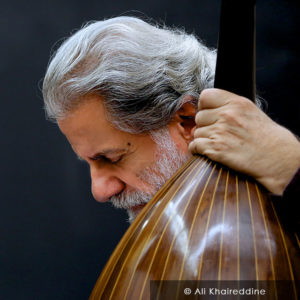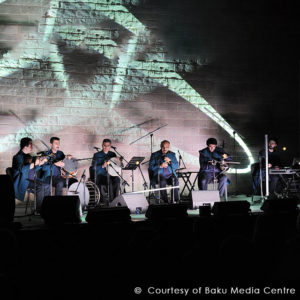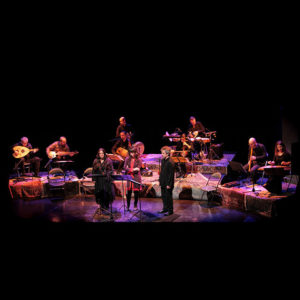Description
SAHAR MOHAMMADI & HAÏG SARIKOUYOUMDJIAN – IRAN & ARMENIA
Sahar Mohammadi: voice
Haïg Sarikouyoumdjian: duduk (double reed woodwind instrument)
Georgi Minasyan: duduk
Khorshid Dadbeh: tar and tanbur (long-necked stringed instruments)
Tigran Hovhannisyan: dhol (double-headed drum)
In the heart of the night, your sweet lament heals many evils.
The love and the nurturing breath of the Messiah, but, if your heart is without pain, what is there to cure?
Hafez has suffered from this fire and has never tasted sweetness and love. May a gentle breeze bring him this precious message.
Hafez
Thanks to the flexibility of its compositions, the choice of radif (melody structures) contained within the tradition of its transmission from master to pupil, Persian music has a vibrant, impressive repertoire. In addition to perfectly mastered technique, the art of all classical Persian song resides equally in the learning process of such poetry transmitted from heart to heart, and in the fact that only the greatest performers achieve extensive knowledge.
At the root of most of the musical traditions of Asia, from Afghanistan to the Caucasus, Persian music has travelled in time and space from the mountains of the Orient, from India and along the Silk Road, journeying through golden palaces as well as deserts and the vastness of nature, celebrated in Armenian melodies by the duduk.
One of the most beautiful voices of Persian classical song is that of Sahar Mohammadi, heard in 2016 in Fez. She performs alongside the astute, sensitive playing of Haïg Sarikouyoumdjian, a young master of the double-reeded duduk, an instrument that has been on the UNESCO Intangible Cultural Heritage List since 2005. Sarikouyoumdjian performed with the Hesperion XXI Ensemble under the direction of Jordi Savall. Together, the singer and the instrumentalist express an infinite Orient like the path of the soul on steep landscapes, on mountain-tops or in the middle of vast plains.
Although founded on heterogeneous repertoires, the respective musical traditions of Sahar and Haig are both modal, placing great importance on improvisation and the art of ornamentation. The melodies fly away, transformed into powerful vocalisations before gently landing in an evanescent murmur, prolonged by the breath of the duduk. The pared-down musical osmosis of these two artists generates both earthly and heavenly emotion, with no mystical artifice, but rather a sweet celebration of the beauty of life in which refinement, elegance and simplicity merge gracefully.




